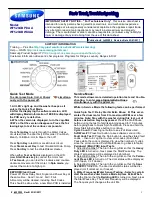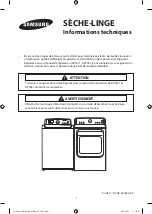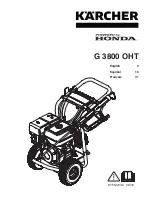
OF
USE OF
DETERGENTS
Is your water hard? If it is, and if you use a carbonate type non-phosphate detergent, you will most probably notice
limestone* deposits on your clothes and washer surfaces. The hardness of your water and your washing frequency
will determine how rapidly the limestone will build up. If your water is VERY HARD (11 or more grains) and if you
wash just a few loads a week, you may see limestone buildup in just a few months.
Effects on Clothes
Although limestone buildup occurs more rapidly on
cotton, it will eventually affect various fabrics in the
following ways:
●
Gives a stiff, harsh, rough feel to fabrics such
as toweling.
●
Causes colors to fade and become dull and dingy.
●
Causes graying of fabrics.
●
Leaves a white, powdery residue on
dark-colored items.
●
Causes spot-fading of bright colors as a result of
direct contact with detergent.
. Reduces wrinkle-resistance of permanent
press fabrics.
●
Destroys effectiveness of flame-retardant finishes on
cottons such as children’s
●
Increases fabric wear because of the scrubbing action
between limestone deposits on the fabrics during
washer agitation.
Effects on Washer
●
Unsightly buildup on all washer surfaces exposed to
the wash solution.
●
Mat-like, crusty formations caused by lint adhering
to the sticky limestone deposits.
Increased service calls because of limestone deposits
in the pump, recirculation water hoses, filters and
other washer parts.
●
Reduced useful life of washer.
Recommended Methods to Reduce
Limestone Buildup
Use a powdered phosphate detergent or a liquid
detergent if these are available in your area.
●
Install a home water softener. This will significantly
reduce limestone buildup.
●
Use a packaged non-precipitating water softener,
such as
brand with phosphate.
Good Washing Practices May Delay Limestone Damage to Clothes
The following recommendations will temporarily delay
the effects of limestone on your clothes. These are
generally good washing practices and will give better
removal whether or not you have hard water or use
carbonate detergent.
●
Use hotter wash water, for example up to
for cottons. This
improves
oily-soil removal.
●
If you wash in cooler water to save energy, use more
detergent to promote better washing. Also be sure to
use bleach on
fabrics. Use hot water
whenever possible.
●
Add detergent and
washer to fill and agitate
for three or four minutes to dissolve detergent before
adding clothes.
●
Increase amount of detergent. See guide on opposite
page for recommended detergent amounts in relation
to water hardness.
●
Increase use of bleaches, presoaks, packaged water
conditioners, prewash soil and stain removers to help
in removing stubborn soils and stains.
●
Use greater care in sorting loads. Wash very dirty
loads separately and increase detergent to help keep
dirt from redepositing on less soiled items. Wash
delicate items separately to prevent damage from
heavy, sturdy clothes.
●
Wash
loads to increase cleaning action
of washer.
●
Use fabric softener to counteract stiffness or harshness
in clothes.
*LIMESTONE–technically called CALCIUM CARBONATE–is caused by the
reaction of the calcium in the hard water with the sodium carbonate in the detergent
12










































